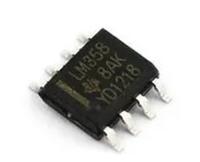| 是否无铅: | 不含铅 | 是否Rohs认证: | 符合 |
| 生命周期: | Obsolete | 零件包装代码: | DIP |
| 包装说明: | DIP, DIP20,.3 | 针数: | 20 |
| Reach Compliance Code: | compliant | 风险等级: | 5.11 |
| Is Samacsys: | N | 总线兼容性: | 8089; 80C88; 8088; 80C86; 8086 |
| 最大时钟频率: | 8 MHz | JESD-30 代码: | R-PDIP-T20 |
| JESD-609代码: | e3 | 长度: | 25.895 mm |
| 端子数量: | 20 | 最高工作温度: | 70 °C |
| 最低工作温度: | 封装主体材料: | PLASTIC/EPOXY | |
| 封装代码: | DIP | 封装等效代码: | DIP20,.3 |
| 封装形状: | RECTANGULAR | 封装形式: | IN-LINE |
| 峰值回流温度(摄氏度): | NOT APPLICABLE | 电源: | 5 V |
| 认证状态: | Not Qualified | 座面最大高度: | 5.33 mm |
| 子类别: | System Interface Logic ICs | 最大供电电压: | 5.5 V |
| 最小供电电压: | 4.5 V | 标称供电电压: | 5 V |
| 表面贴装: | NO | 技术: | CMOS |
| 温度等级: | COMMERCIAL | 端子面层: | Matte Tin (Sn) - annealed |
| 端子形式: | THROUGH-HOLE | 端子节距: | 2.54 mm |
| 端子位置: | DUAL | 处于峰值回流温度下的最长时间: | NOT APPLICABLE |
| 宽度: | 7.62 mm | uPs/uCs/外围集成电路类型: | SYSTEM INTERFACE LOGIC, BUS ARBITER AND CONTINUOUS SIGNAL GENERATOR |
| Base Number Matches: | 1 |
| 型号 | 品牌 | 替代类型 | 描述 | 数据表 |
| CP82C89Z | INTERSIL |
类似代替  |
CMOS Bus Arbiter |

|
| CP82C88 | INTERSIL |
类似代替  |
CMOS Bus Controller |

|
| CP82C88Z | INTERSIL |
功能相似  |
CMOS Bus Controller |

|
| 型号 | 品牌 | 获取价格 | 描述 | 数据表 |
| CP82C89Z | INTERSIL |
获取价格 |
CMOS Bus Arbiter |

|
| CP835N3C | JSMC |
获取价格 |
TO-220C |

|
| CP835N3D | JSMC |
获取价格 |
TO-220MF-K1 |

|
| CP850N3C | JSMC |
获取价格 |
TO-220MF-K1 |

|
| CP85138 | CUI |
获取价格 |
PELTIER MODU LE |

|
| CP85238 | CUI |
获取价格 |
PELTIER MODU LE |

|
| CP85338 | CUI |
获取价格 |
PELTIER MODU LE |

|
| CP85438 | CUI |
获取价格 |
PELTIER MODU LE |

|
| CP85H | CUI |
获取价格 |
PELTIER MODULE |

|
| CP85H_17 | CUI |
获取价格 |
PELTIER MODULE |

|
 LM317T数据手册解读:产品特性、应用、封装与引脚详解
LM317T数据手册解读:产品特性、应用、封装与引脚详解

 一文带你了解?DB3二极管好坏判断、参数信息、替代推荐
一文带你了解?DB3二极管好坏判断、参数信息、替代推荐

 LM358DR数据手册:引脚说明、电气参数及替换型号推荐
LM358DR数据手册:引脚说明、电气参数及替换型号推荐

 OP07CP数据手册解读:引脚信息、电子参数
OP07CP数据手册解读:引脚信息、电子参数
